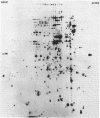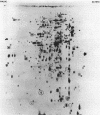Abstract
The protein composition of Escherichia coli W3110 grown in the presence and absence of 5% sodium dodecyl sulfate (SDS) was examined by two-dimensional gel electrophoresis. In SDS-grown cells, at least 4 proteins were turned on, 13 were turned off, 15 were elevated, and 15 were depressed. The 19 unique and elevated SDS-induced spots constituted 7.91% of the total 35S-labeled protein. There was no apparent overlap between these 19 detergent (SDS) stress proteins and those of other known bacterial stress responses. The detergent stress stimulon is a distinct and independent stimulon. Its physiological relevance probably derives from the presence of bile salts in animal gastrointestinal tracts.
Full text
PDF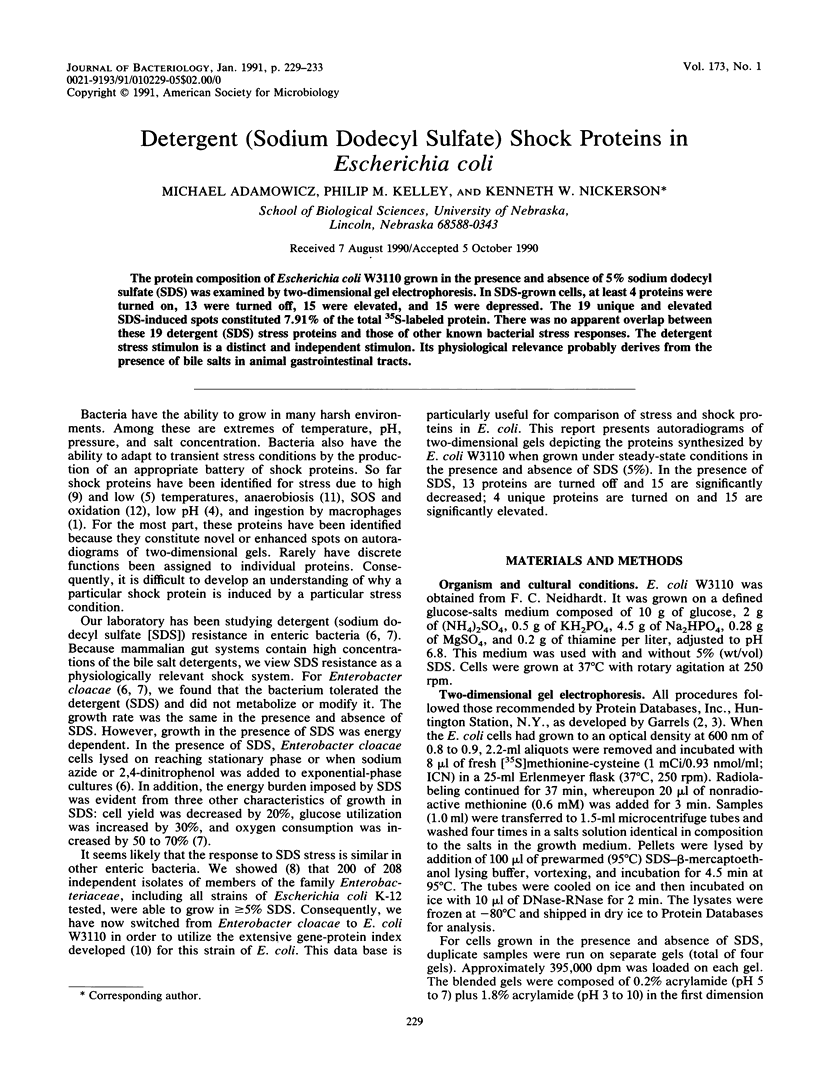
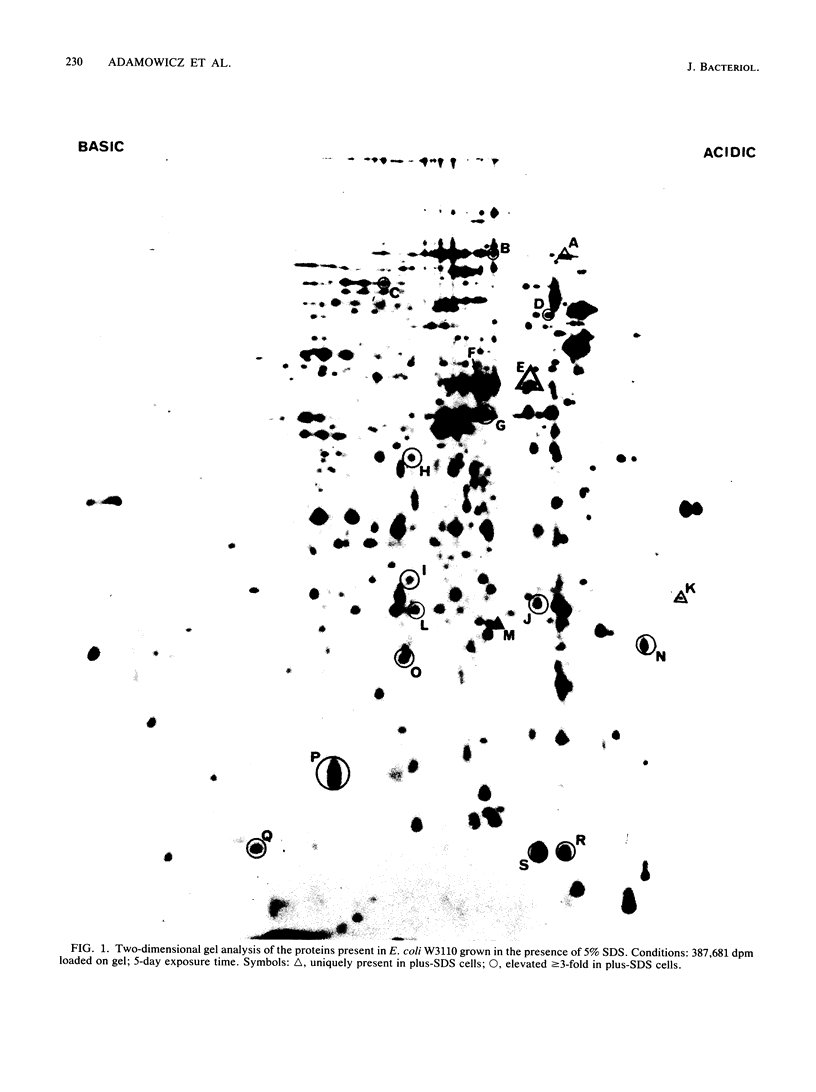
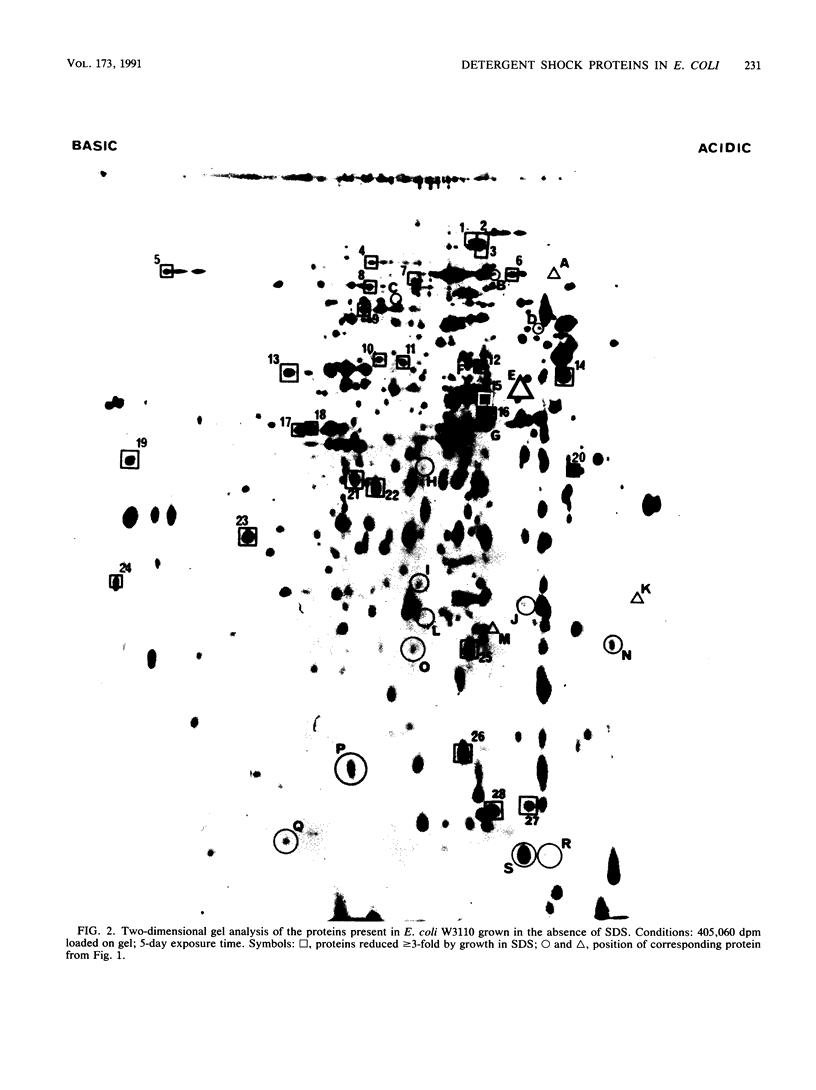
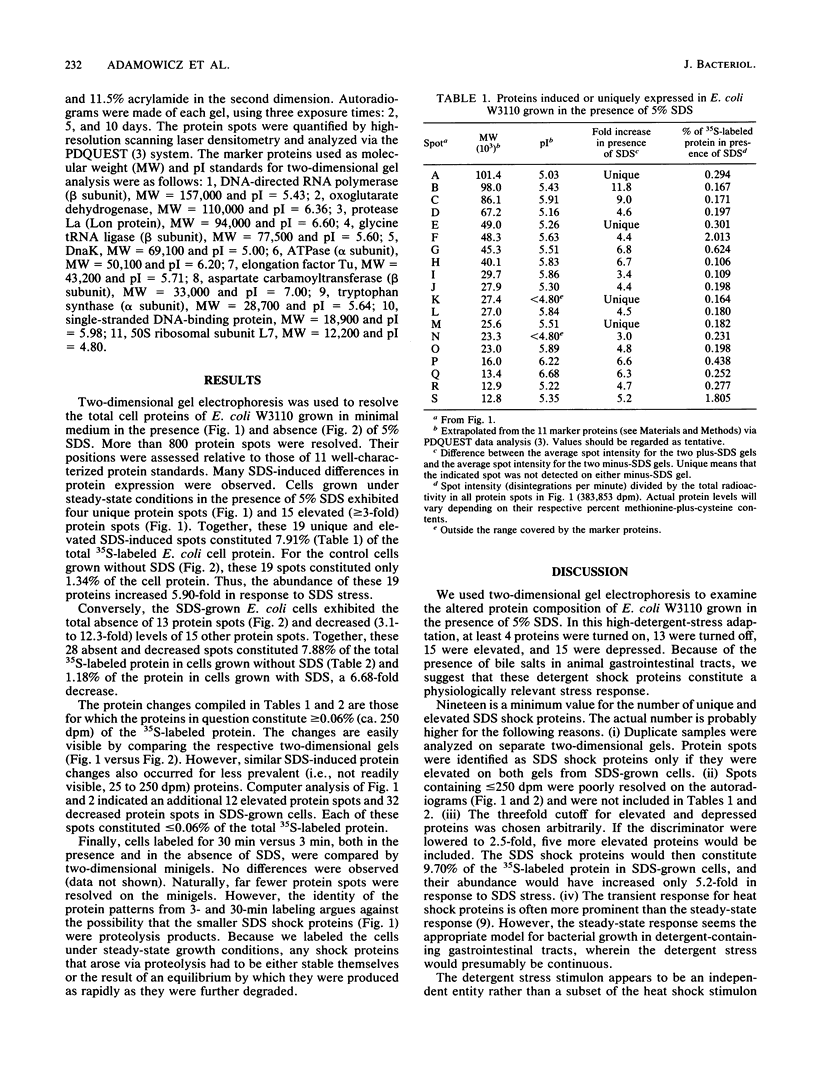
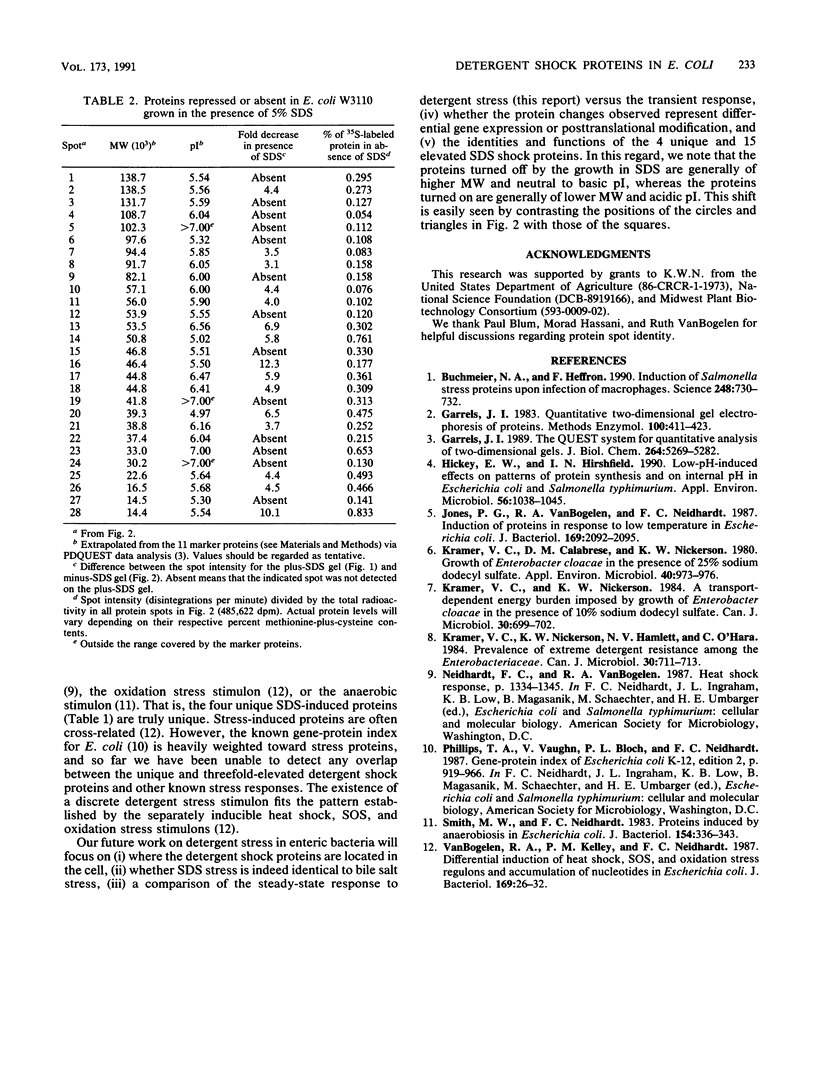
Images in this article
Selected References
These references are in PubMed. This may not be the complete list of references from this article.
- Buchmeier N. A., Heffron F. Induction of Salmonella stress proteins upon infection of macrophages. Science. 1990 May 11;248(4956):730–732. doi: 10.1126/science.1970672. [DOI] [PubMed] [Google Scholar]
- Garrels J. I. Quantitative two-dimensional gel electrophoresis of proteins. Methods Enzymol. 1983;100:411–423. doi: 10.1016/0076-6879(83)00070-1. [DOI] [PubMed] [Google Scholar]
- Garrels J. I. The QUEST system for quantitative analysis of two-dimensional gels. J Biol Chem. 1989 Mar 25;264(9):5269–5282. [PubMed] [Google Scholar]
- Hickey E. W., Hirshfield I. N. Low-pH-induced effects on patterns of protein synthesis and on internal pH in Escherichia coli and Salmonella typhimurium. Appl Environ Microbiol. 1990 Apr;56(4):1038–1045. doi: 10.1128/aem.56.4.1038-1045.1990. [DOI] [PMC free article] [PubMed] [Google Scholar]
- Jones P. G., VanBogelen R. A., Neidhardt F. C. Induction of proteins in response to low temperature in Escherichia coli. J Bacteriol. 1987 May;169(5):2092–2095. doi: 10.1128/jb.169.5.2092-2095.1987. [DOI] [PMC free article] [PubMed] [Google Scholar]
- Kramer V. C., Calabrese D. M., Nickerson K. W. Growth of Enterobacter cloacae in the presence of 25% sodium dodecyl sulfate. Appl Environ Microbiol. 1980 Nov;40(5):973–976. doi: 10.1128/aem.40.5.973-976.1980. [DOI] [PMC free article] [PubMed] [Google Scholar]
- Kramer V. C., Nickerson K. W. A transport-dependent energy burden imposed by growth of Enterobacter cloacae in the presence of 10% sodium dodecyl sulfate. Can J Microbiol. 1984 May;30(5):699–702. doi: 10.1139/m84-104. [DOI] [PubMed] [Google Scholar]
- Kramer V. C., Nickerson K. W., Hamlett N. V., O'Hara C. Prevalence of extreme detergent resistance among the Enterobacteriaceae. Can J Microbiol. 1984 May;30(5):711–713. doi: 10.1139/m84-106. [DOI] [PubMed] [Google Scholar]
- Smith M. W., Neidhardt F. C. Proteins induced by anaerobiosis in Escherichia coli. J Bacteriol. 1983 Apr;154(1):336–343. doi: 10.1128/jb.154.1.336-343.1983. [DOI] [PMC free article] [PubMed] [Google Scholar]
- VanBogelen R. A., Kelley P. M., Neidhardt F. C. Differential induction of heat shock, SOS, and oxidation stress regulons and accumulation of nucleotides in Escherichia coli. J Bacteriol. 1987 Jan;169(1):26–32. doi: 10.1128/jb.169.1.26-32.1987. [DOI] [PMC free article] [PubMed] [Google Scholar]



